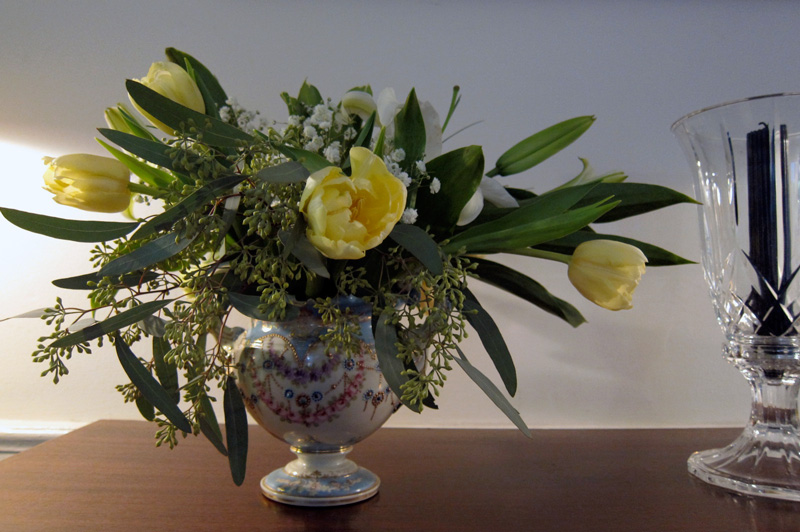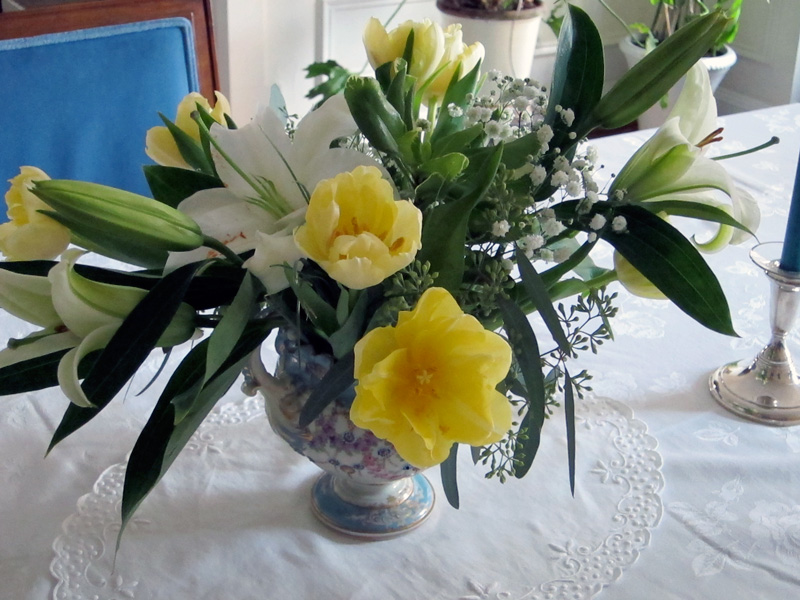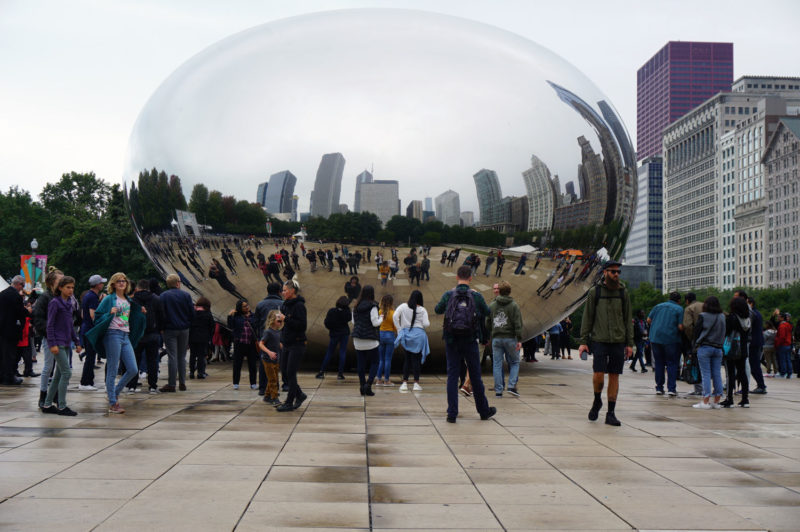My husband gave me some flowers for Valentine’s Day. We were having dinner at home last night with another couple, so I decided to make a special-occasion centerpiece.
Like my photography, my flower-arranging is an amateur undertaking. What I know about it I’ve learned from trial and error. I’ve picked up tips by looking at professional arrangements and from articles in magazines.
Here’s my approach to making a centerpiece for a dinner table.
1. The goal is to make a small but showy arrangement low enough for your dinner guests to see over. This means selecting a low vase, preferably opaque. I look for something wide-mouthed, so that the flowers can be placed at an angle, creating a wide, lively arrangement large enough to hold its own on the table. The “vase” in this arrangement is an old cachepot that I had bought used.
2. It’s good to have more foliage than flowers, and to combine plant materials that are rigid and flowing. Forming the backbone of this arrangement are two stems of lilies, combined with draping eucalyptus, inexpensive baby’s breath, and several tulips, whose broad green leaves were as important as the yellow heads in achieving the effect that I was after.
3. Use a florist’s frog. The one I have is from a flea market; they are also available on Amazon. The frog is the anchor that keeps the flowers standing up straight or drooping over; without it, they would inevitably flop out of the vase.
4. Don’t be afraid to cut the flowers short. For this arrangement, I had to cut off the lilies’ long stems. I used to be timid about cutting flowers short. No more! You want the arrangement to be full, with the flowers forming a harmonious visual whole with the vase.
This bouquet will grow in beauty over the next couple of days, as the lilies and tulips open further.



Janet says
Love the vase you chose to place your flowers in.
Celia says
Flower-pots, plain or fancy, make surprisingly good vases!